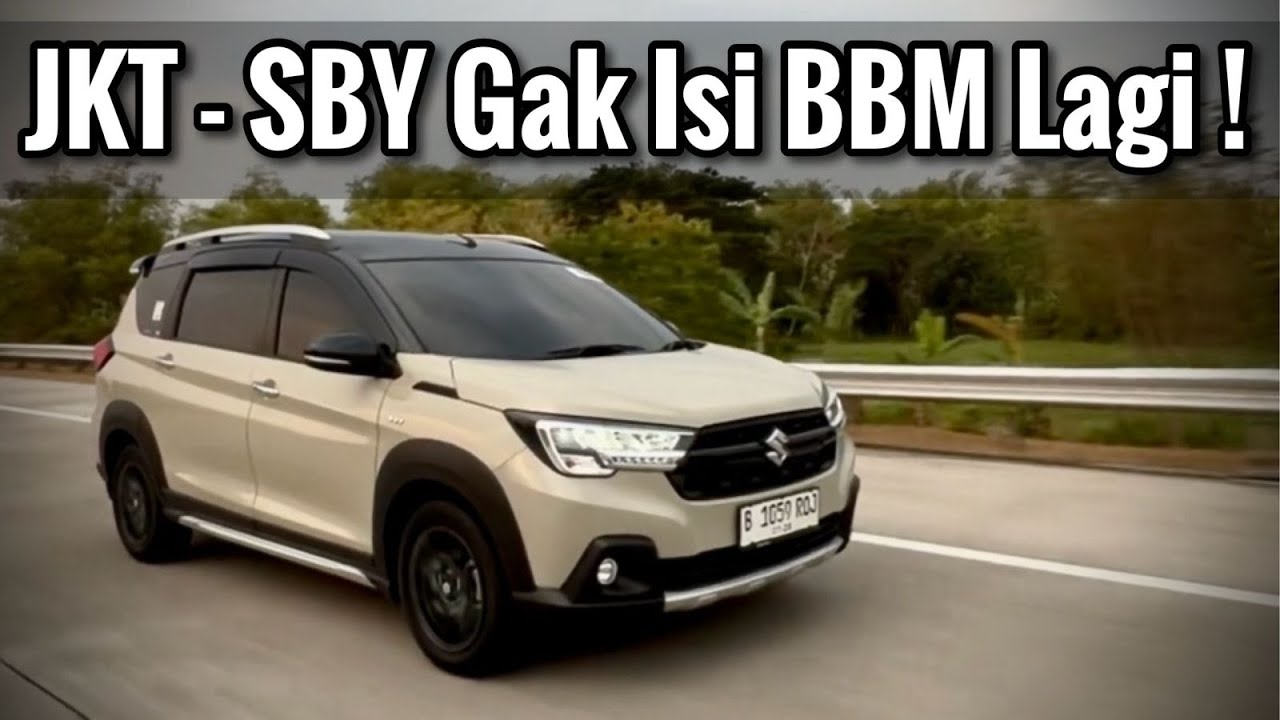Welcome to our blog post where we discuss the intriguing topics covered in the YouTube video titled "SUZUKI XL7 Smart Hybrid Indikator Bensin Seakan Gak Berfungsi" ("SUZUKI XL7 Smart Hybrid Fuel Indicator Seems Inactive"). In this video, the Motomobi channel explores the history and unique features of the Suzuki XL7, a crossover that is almost hybrid and capable of traveling from Jakarta to Surabaya using just one tank of fuel.
Suzuki has always been known for creating vehicles that stand out and have no competitors. Just like the iconic Jimny, a small but powerful SUV that took the Indonesian market by storm, the Suzuki XL7 showcases Suzuki’s ability to think outside the box.
While other SUVs boast large engines and high fuel consumption, the Suzuki Jimny came with a small engine and compact body, providing a different and more efficient driving experience. However, Suzuki’s quest to be unique sometimes leads them to downgrade their models. For example, the Suzuki Baleno, initially released in 1996, started off on the same level as the Honda Civic, Toyota Corolla, or Mitsubishi Lancer. Nowadays, it competes with the likes of the Toyota Yaris or Honda Jazz.
This uniqueness is also evident in the Suzuki XL7. Originally introduced in 1998, it was more of an SUV than a crossover, with a design reminiscent of the Grand Escudo. However, due to its high price and lack of 4×4 capabilities, it didn’t gain much traction in the Indonesian market. Despite this setback, Suzuki reintroduced the XL7 in 2020, transforming it into a crossover built on the foundation of an MPV.
Though the XL7 may have lost its status as a pure SUV and instead moved down a class, this decision seems to have resonated with the Indonesian market. The video showcases the XL7 Hybrid’s exceptional fuel efficiency, as the Motomobi team is able to travel 700 kilometers from Jakarta to Surabaya without the need to refuel. They provide a visual representation of this achievement on their channel, emphasizing the XL7’s transformation from a gas-guzzler to a cost-effective mode of transportation.
Furthermore, the video includes a review from another renowned automotive channel, highlighting the XL7’s durability and performance on uphill terrains. Whether it’s taking on dusty and rugged roads or proving its long-distance capabilities, the Suzuki XL7 certainly makes a statement.
Join us as we delve deeper into the features and performance of the Suzuki XL7 in this exciting blog post. Don’t forget to subscribe to Motomobi and Fitra Eric’s channels for more interesting content.
1. The Uniqueness of the Suzuki XL7: A Hybrid Crossover with MPV Features

The Suzuki XL7 is a unique hybrid crossover that combines the features of a crossover and an MPV, making it stand out in the market. Unlike other crossovers, the XL7 is equipped with a nearly hybrid engine, making it highly fuel-efficient. With just one tank of fuel, the XL7 can effortlessly travel from Jakarta to Surabaya, showcasing its exceptional fuel economy.
Suzuki has always been known for creating vehicles that are in a league of their own, and the XL7 is no exception. Just like the iconic Jimny, which pioneered the compact SUV category in Indonesia, the XL7 is breaking barriers and setting new standards. While other SUVs have large and fuel-consuming engines, Suzuki goes against the grain by offering a compact engine and body size. However, it’s unfortunate to note that Suzuki sometimes tends to downgrade its models, as seen with the Suzuki Baleno. Originally introduced as a high-class vehicle in 1996, it eventually shifted to compete with smaller cars like the Yaris and Jazz. This phenomenon also applies to the XL7, which started as a prominent SUV but gradually transitioned into a crossover.
Although the XL7 may have downsized, it remains a top-notch choice for those looking for a reliable and efficient vehicle. The first generation of the XL7, introduced in 1998, had a more SUV-like design resembling the Grand Escudo and a V6 engine with a capacity of 2500cc. However, its high price made it less accessible to Indonesian consumers, and the lack of a four-wheel-drive option further hindered its popularity. Despite these circumstances, the first generation XL7 still captivated the market until Suzuki unveiled the second generation in 2006. This newer version was larger and more massive than its predecessor, but unfortunately, it did not make its way to Indonesia until 2020. The 2020 XL7 takes a different approach, embracing its roots as a crossover based on an MPV. Although it may have downgraded from its previous prestigious name, the XL7 Hybrid still addresses the needs of Indonesian consumers by providing impressive fuel efficiency. To see the XL7 Hybrid’s capabilities, you can check out Om Mobi and Fitra Eric’s channels, where they put it to the test by driving 700 km from Jakarta to Surabaya on just one tank of fuel. Along with their review, you can witness the XL7 Hybrid’s performance firsthand.
As the XL7 Hybrid continues to make waves in the automotive industry, it remains an attractive option for those seeking a cost-efficient and fuel-saving vehicle. Stay tuned for more exciting updates and reviews on this exceptional crossover.
2. Suzuki XL7: A History of Defying Norms and Redefining Classes

The Suzuki XL7 is no stranger to defying norms and redefining classes. Just like its predecessors, the XL7 stands out as a unique crossover that is both versatile and innovative. Here, we take a look at the history of the XL7 and how it has taken its own path in the automotive industry.
One of Suzuki’s strengths lies in their ability to create vehicles that have no competitors. Take the Jimny, for example. It pioneered the small SUV market in Indonesia, with its compact size and fuel-efficient engine. Similarly, the XL7 has followed suit by breaking the mold and taking a different route.
Unlike other SUVs that boast large engines and fuel consumption, the XL7 stands out with its smaller body and engine. This distinctive approach sets it apart from its contemporaries. Suzuki has always focused on pushing boundaries and creating cars that defy expectations, and the XL7 is no exception.
Moreover, the XL7 has undergone interesting transformations over the years. When it was first introduced in 1998, it had a more rugged SUV-like appearance, closely resembling the Grand Escudo. This version was equipped with a powerful V6 engine and had a seating capacity of seven. However, it was deemed too expensive for the Indonesian market and lacked the much-desired 4×4 capability.
Fast forward to 2020, Suzuki Indonesia unveiled the latest iteration of the XL7. While it may have carried over the name, this new model took a different approach. It transitioned from being a full-fledged SUV to a crossover built on the foundations of an MPV. Though the XL7 may have downsized and lost some of its SUV features, it found its niche in the Indonesian market as a more affordable and fuel-efficient choice.
The Suzuki XL7 may have defied expectations by "downgrading" itself, but it turns out that this was exactly what the Indonesian market needed. It offers a more fuel-efficient option for those who previously owned gas-guzzling vehicles. To prove its efficiency, the XL7 was put to the ultimate test: a drive from Jakarta to Surabaya, covering a distance of 700 kilometers on just one tank of fuel. The XL7 surpassed expectations by completing the journey without requiring a refill, showcasing its ability to provide an economical and practical driving experience.
In conclusion, the history of the Suzuki XL7 is a testament to Suzuki’s commitment to innovation and pushing the boundaries of convention. From its early days as a powerful SUV to its current iteration as a fuel-efficient crossover, the XL7 continues to redefine the norms of its class. Its ability to adapt to the changing needs of the Indonesian market is truly remarkable, making it a standout choice for those seeking a unique and efficient vehicle.
3. Suzuki XL7: The Smart Hybrid Solution for Fuel Efficiency in Indonesia

The Suzuki XL7 is a crossover that combines the features of an MPV and the fuel efficiency of a hybrid, making it the smart choice for drivers in Indonesia. Unlike other crossovers in the market, the XL7 stands out with its almost hybrid engine, making it a unique option for those seeking both power and fuel efficiency.
Suzuki has a history of creating unmatched vehicles, just like with the iconic Jimny, which was the pioneer of compact SUVs in Indonesia. The XL7 continues this trend by offering a compact crossover with a small engine and a small body. While other SUVs may have larger engines that consume more fuel, the XL7 defies expectations by offering a smaller, more efficient engine. This downsizing approach, seen previously with the Suzuki Baleno, allows the XL7 to compete with models like the Yaris and Jazz while still offering the performance and space of an SUV.
The second generation of the XL7 was launched in 2006, with a larger size compared to its predecessor. However, it was only recently in 2020 that Suzuki Indonesia introduced the XL7 to the market. While it may not be the SUV with a V6 engine that many desire, the XL7 Hybrid demonstrates that Suzuki understands the needs of Indonesian drivers. This crossover may have a smaller engine and fall into a lower price category, but it delivers on fuel efficiency, transforming what was once a gas-guzzler into an economical choice. With a range of 700 km on a single tank of fuel, as proven in a test drive from Jakarta to Surabaya, the XL7 Hybrid is a compelling option for budget-conscious and environmentally conscious drivers alike.
4. From Jakarta to Surabaya on One Tank: Exploring the Fuel Efficiency of the Suzuki XL7

The Suzuki XL7 is an impressive crossover that combines the versatility of an MPV with the fuel efficiency of a hybrid. It is the only crossover in the world that can travel from Jakarta to Surabaya on just one tank of fuel. This feat is made possible by its smart hybrid technology, which optimizes fuel consumption and reduces emissions.
Suzuki has always been known for creating unique and standout vehicles that have no competition in the market. From the iconic Jimny to the groundbreaking Baleno, Suzuki has consistently pushed boundaries and set new trends. The XL7 is no exception, as it defies the traditional standards of a crossover. While most SUVs have large engines that guzzle fuel, the XL7 takes a different approach. With its smaller engine and compact body, it offers a more efficient and eco-friendly option. Although it may be considered a downgrade in terms of class compared to its predecessor, the XL7 Hybrid perfectly caters to the needs of Indonesian drivers who prioritize fuel economy over prestige.
Driving the XL7 is an extraordinary experience, especially when put to the test on long journeys. In a daring experiment, the XL7 proved its fuel efficiency by covering a distance of 700 KM from Jakarta to Surabaya on just one tank of fuel, without the need for refueling. This remarkable achievement is showcased in a video on the Motomobi and Fitra Eric channels, where you can witness the XL7’s performance firsthand. Another interesting aspect about the XL7 is its off-road capability, as demonstrated by Mamang, who took the vehicle up rugged terrains and returned with muddy tires, proving that the XL7 is not just a city car, but a versatile companion for any adventure. In conclusion, the Suzuki XL7 Smart Hybrid has proven to be a unique crossover in the Indonesian market. Suzuki, known for creating standout vehicles, has once again delivered a car unlike any other. The XL7 combines the best features of an SUV and an MPV, offering both power and fuel efficiency. Despite its smaller size, this crossover has the capacity to accommodate seven passengers comfortably.
While the first generation of the XL7 was quite expensive for Indonesian consumers, the second generation, introduced in 2020, presents a more affordable option. The XL7 Hybrid addresses the need for a fuel-efficient vehicle in a country where fuel consumption is a significant concern. In fact, the XL7 has been put to the test, driving 700 kilometers from Jakarta to Surabaya on just one tank of fuel. This remarkable feat has impressed car enthusiasts and confirmed the XL7’s practicality and cost-effectiveness.
Furthermore, reviews by reputable YouTubers such as Om Mobi and Fitra Eric have highlighted the XL7’s capabilities. Its performance on challenging terrains, such as steep hills and dusty roads, has been put to the test and proven successful. This crossover has shown that it can handle various driving conditions without compromising on comfort or reliability.
Overall, the Suzuki XL7 Smart Hybrid is a standout vehicle in its class. It presents an excellent option for Indonesian consumers looking for a spacious and fuel-efficient crossover. With its unique features and affordability, the XL7 Hybrid has the potential to become a popular choice among car buyers.
